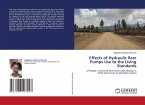This book demonstrates the power of Geographic Information System (GIS) techniques for identifying populations which are both exposed to Electromagnetic Fields (EMFs) and at risk of electrocution because they live within the zone of potential risk around power lines in the Benin region, Nigeria. GIS-based algorithms such buffering, overlay and address geo-coding were used to generate a geo-database consisting of both spatial and non-spatial information from which it was possible to holistically visualize the areal extent and population at risk. Such GIS-assisted database will enhance future epidemiologic research and serve as a framework for effective decision making.
Bitte wählen Sie Ihr Anliegen aus.
Rechnungen
Retourenschein anfordern
Bestellstatus
Storno








